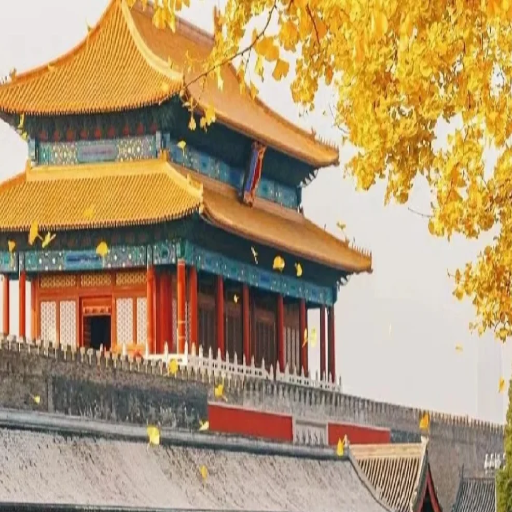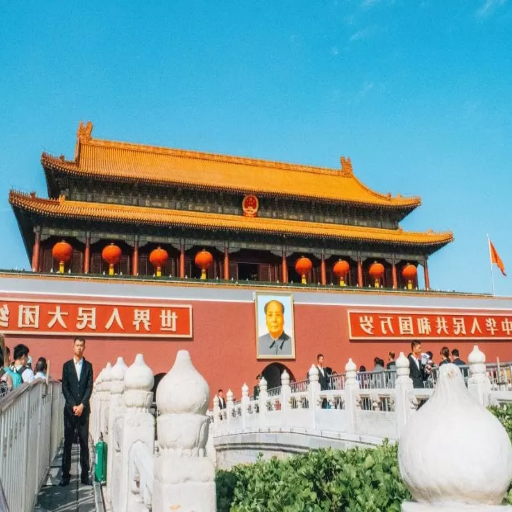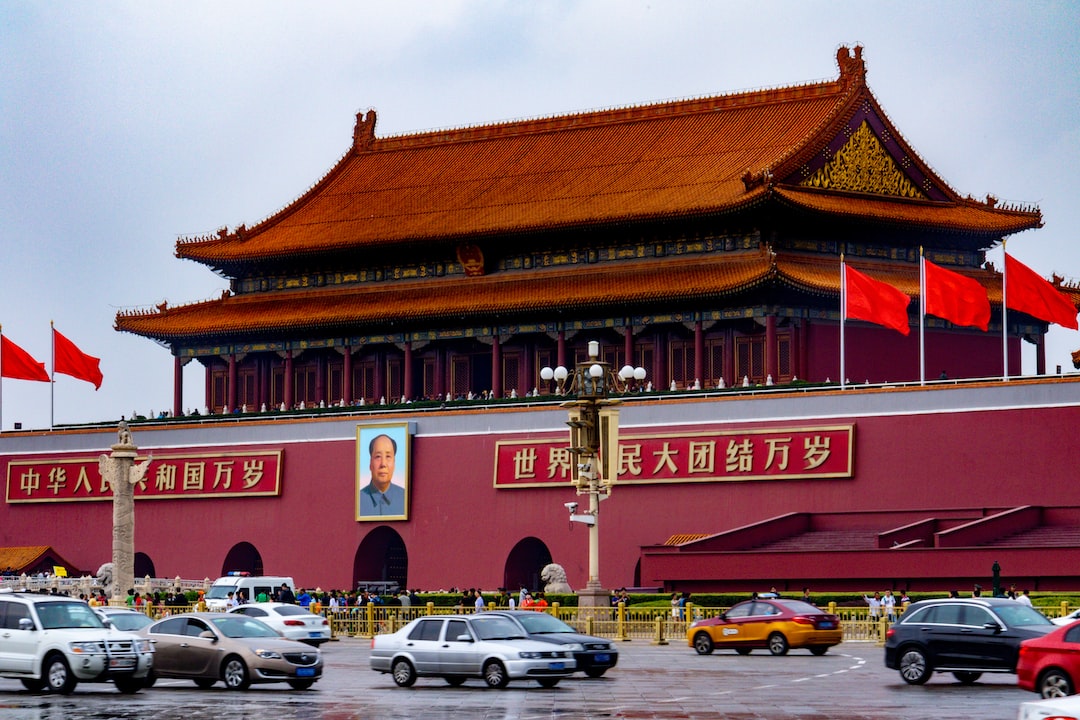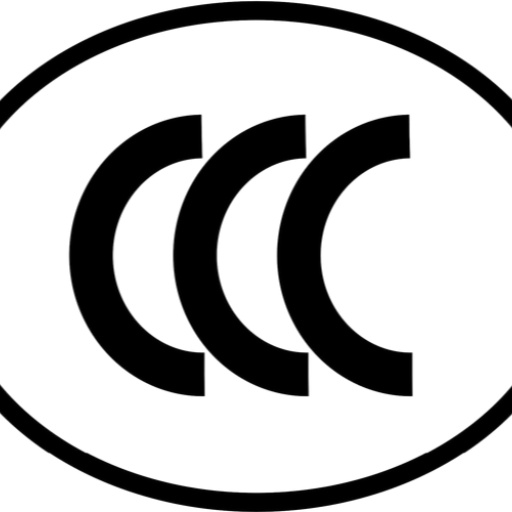The sprawling palace complex located in the center of Beijing, the Forbidden City, used to serve as the palace of emperors along with their retinues. This site is a masterpiece of Chinese architecture and globally recognized for its astounding history, which boasts the secrets of empires. Walk through the captivating narrow streets, magnificent halls, and serene gardens where stunning architecture intersects with rich culture and profound mysteries. Globetrotters looking for amazement, bound together with history and culture without discrimination, will find every stunning experience waiting for them there. Prepare to relive history and unlock the ancient Chinese secrets hidden within its walls.
What is the Forbidden City, and Why Should You Visit?

Timeline of the Forbidden City History
As the dominion of an emperor, known as the Forbidden City, which was built as an imperial palace in the Ming Dynasty (1368-1644) and continued to serve throughout the Qing Dynasty (1644-1912), is located in the heart of Beijing, China, and has been preserved for almost 500 years. Under Emperor Yongle’s reign, he commanded construction to begin in 1406, and it reached completion in 1420. Spread across an estimated 180 acres, the palace complex encompasses more than 980 buildings and roughly 8700 rooms within itself, earning the title of one of the most preserved palatial structures in the world.
The Forbidden City represents each paramount principle of Chinese culture. This results from careful design to ensure the layout reflects Confucius’ ideologies. The use of cardinal alignment, hierarchy, symmetry, credibility, and yellow tiled roofs alongside red walls represents true emperor power, overwhelming authority, prosperity, and dominion. The City served as the ceremonial center of China and acted as the foundation for crucial decisions in the nation’s history.
Every year, the Forbidden City draws millions of visitors since it is now a UNESCO World Heritage Site. It is home to the Palace Museum, which has an expansive collection of precious artworks, including paintings, ceramics, and treasures from the imperial dynasties. The Forbidden City’s Palace Museum is a must-see treasure for those interested in imperial history, culture, and heritage. It has an enduring magnificence that exemplifies China’s rich history and cultural legacy.
Heritage Significance of the Forbidden City
The City of Forbidden Palaces is exceptionally significant as a UNESCO World Heritage Site in China. This is due to the unequal preservation of ancient Chinese history, culture, and relics. It epitomizes ancient history in the modern world within a radius of 180 acres in Beijing city. It is considered one of the most significant palace structures that has been preserved over the years. During the Ming and Qing dynasties, over 980 buildings and more than 8000 rooms were constructed while the palace complex was meticulously planned on a vision of political and philosophical ideals. The complex is the most elaborate structure in China. It showcases a balanced blend of quintessential elements, use of traditional building principles, and richly decorated interiors highlighting this period’s architecture and craftsmanship.
Maintaining its influence as a cultural hub, the Forbidden City’s Palace Museum is home to over 1.8 million cultural artifacts, including beautiful jade sculptures, ancient calligraphy, and rare manuscripts that remind visitors of China’s Imperial past. UNESCO awarded the Forbidden City recognition not only for its astounding architectural prowess but also for China’s cultural and civilizational heritage. Today, it is an essential place of learning and culture, bringing in tourists, historians, and scholars worldwide. The efforts made towards preserving the area around the Forbidden City highlight the need to protect sites of cultural value for future generations.
What a Tour of the Forbidden City Looks Like
Guided walks around the Forbidden City take you through the rich culture of China and the reigning Ming and Qing dynasties. With an area surpassing 180 acres, the Forbidden City is home to around a thousand preserved ancient buildings, which can be used as a source of boundless architectural and historical spectacles. Expect to visit the Meridian Gate, Hall of Supreme Harmony, and the Palace of Heavenly Purity, where you will witness awe-inspiring, rich symbols and breathtaking, intricate designs.
The careful grooves and symmetrical, sprinkled courtyards and halls of The Forbidden City form an architectural sight. They are referred to as Feng Shui coordinates, where the pavilions are adorned in gold and red. With vibrant red gates opening up to jangling of gold in the form of imperial treasures alongside monuments of Chinese Art, there are better sights to behold around the world. For indulging in rich history, an audio guide can help place the historical context behind these Chinese masterpieces.
Like any other attractive place in the world, this UNESCO site draws a crowd domestically and internationally during the holidays and weekends, so be prepared. It would be wise to book an appointment beforehand, as these daily visitor caps help with preservation. Along with the ticket, setting aside half a day for this magnificent sight is a requirement for those intending to witness its true glory and is bound to leave a lasting impact. Be sure to wear suitable footwear and apply sunscreen.
How to Book Tickets for a Forbidden City Tour?

Where to Purchase Forbidden City Tickets
You can purchase tickets for the Forbidden City from several official and trustworthy sites. The best option is the Palace Museum website, where sightseers can buy tickets ahead of time. In addition, some authorized third-party ticketing sites have been tailored for overseas visitors and tend to offer language services and other payment options. It is worth noting that tickets cannot be purchased on the spot because the Forbidden City has moved to an online real-name ticketing system.
For local tourists, numerous domestically popular apps and websites provide easy access to ticket sales and local travel information. Prices commonly do not go beyond 60 CNY to 80 CNY, depending on the season, and there are discounts for students, senior citizens, and children. When making a reservation, having a national ID or passport is necessary, as those details are essential during the booking process. Tickets tend to sell out relatively fast during the peak seasons of tourist activities and the national holidays, so planning is critical.
Considerations in Booking Options: Guided Tours vs Self-Guided
When planning your visit, it is crucial to choose between guided tours and self-guided experiences. Guided tours usually have a pre-defined itinerary and also take care of other logistics like transportation and routes. They also provide important historical information, exclusive access to certain areas, and the services of a professional guide. They are ideal for those with little time or who want everything arranged. Pricing usually ranges based on duration, group size, and other features. Most packages, however, include entrance tickets.
Unlike guided tours, self-guided tours are much more flexible and provide personal time to visit sites of interest at a traveler’s pace. Those opting for self-guided tours want control over which attractions they prioritize, how long to spend at each site, and, most importantly, the order of site visits. This option, as most sites provide maps, brochures, or interactive mobile applications, guarantees a good overall experience even without a professional guide. Overall, this option allows more freedom in the planning phase and is often the cheaper alternative.
Each choice caters to a specific travel approach, so weigh your personal preferences, budget, and available time when deciding. Whether you enjoy the breadth and simplicity of a guided tour or the freedom of a self-guided exploration, both methods can enhance your experience.
Understanding Ticket Pricing And Their Availability
The cost of a ticket and its availability may differ based on various aspects, including the time of the year, the destination’s popularity, and the type of experience offered. During the summer months and winter holidays, ticket prices usually increase. This phenomenon is known in business as the “demand-supply” phenomenon. Off-season traveling mostly allows for lower costs and more available resources. Capstone Projects also provide popular psychographics and dynamic pricing where costs vary per adventure levels, weekdays, weekends, and other factors. Discounts are provided for advance purchases, bulk reservations, and specific age types such as students or Senior Citizens.
Almost all sites and other attractions provide exclusive, detailed booking systems. These allow checking for availability and making forward purchases. Some time-sensitive events or areas facing high demand, most supported by mid-day temporal slots, tend to sell off the fastest. To make a stretch both in resources accessed and value received, subscriptions that permit access to other strategically chosen locations throughout a given time provide the best options. Analyzing these strategies alongside others, one can smartly balance their available resources against their preferred destinations.
What are the Best Guided Tour Options for the Forbidden City?

Small Group Tours vs Private Tours
While pondering concluding the small group tours and private tours of The Forbidden City, several factors come into account. Interacting with your fellow travelers can be beneficial with the small group tours, as they tend to be cost-effective. These tours usually have a fixed route, including the Hall of Supreme Harmony and the Imperial Garden. They are guided by trained professionals who share detailed insights into the palace’s rich history. This tour can be an excellent option for individuals and couples looking for an in-depth social experience.
In contrast, private tours are tailored to your interests and pace, providing a deeply personal experience. For example, with a private guide, guests can explore off-the-beaten-path areas of the Forbidden City and linger at specific points of interest without being constrained by time. Families and small groups of friends who prefer quieter environments will notice that private tours, while expensive, are more flexible and provide exclusive exploration opportunities.
Whether you prioritize socializing on a budget or customization and privacy will determine your decision between small-group and private tours. Regardless, both options guarantee an unforgettable trip to one of China’s iconic cultural landmarks.
What Can You Expect from a Guided Tour of the Forbidden City?
A guided tour of the Forbidden City provides comprehensive historical and architectural context and its unmatched cultural importance as a UNESCO World Heritage Site. Most tours include access to the Meridian Gate, Hall of Supreme Harmony, and Palace of Heavenly Purity. While professional tour guides show clients the landmarks, they also share the intriguing stories of imperial China, including the emperors, concubines, and officials who once inhabited these halls.
In addition, ticket packages often include entrance fees, convenient line bypassing, and, in some cases, multimedia players or headphones for guided listening. Certain tours also provide supplemental packages, such as tours to more secluded areas such as the Palace of Tranquil Longevity or private display rooms of the Ming and Qing Dynasty artifacts and treasures. Guests are offered the opportunity to traverse large courtyards, view magnificent features of structures, and be in an atmosphere that is rich in age and magnificence.
How to Select the Right Tour Guide for Your Trip
When selecting the best door guide for your needs, pay close attention to certain aspects that ensure an enriching experience. A professional tour guide should have a firm understanding of the country’s history, culture, and architecture and be able to explain it in an engaging and easy-to-follow manner. Find guides who are fluent in the language you want and know how to adapt the tour for diverse perspectives, whether leisurely, artistic, or historical.
In addition, guides who have undergone training and hold specific qualifications also portray professionalism. With more experience, guides tend to gather more insightful stories and interesting facts during the trips, which add value for the user’s understanding. In addition, note the traveler’s reviews and ratings if they are available, as more often than not, they indicate the valuable interactions and smooth logistical management done by the guide. It is worth noting if the guide exhibits flexibility in itinerary customization, as it offers tailored tours or references to other attractions and eateries to enhance the customer experience. Considering these factors, you ensure the tour is educational and unforgettable.
What to Know About the Itinerary of a Forbidden City Tour?

A Sample Schedule for a Guided Tour of the Forbidden City
The expansive scalp of imperial China’s history, culture, and tourism sites, sited within the capital of China, its outstanding landmarks and monuments are described with remarkable detail on guided tours of the Forbidden City, which often unfold around the Meridian Gate, the exquisite southern entrance, from their point of digging head towards the Outer Court, which served ceremonial purposes, a grand antechamber that adjoins the Central Pedestal of China House, and stunning landmarks like Freedom Hall, the Hall of Supreme Harmony, which is deemed as the tallest structure in the Fort. Of Star Cities is claimed to have an eye-catching golden roof and a throne shackled with straight golden shackles, further deep diving into its unbelievable beauty will enable you marvel at utter expressiveness of golden jeweled imperial throne.</s>.
After this section, the guests will proceed towards the Inner Courtyard. These portions acted and composed, serving as a housing for the emperor’s family and the Royal seat of the Emperor. Here guests can delve deeper into the shimmering gemstones in the Chic Palace of Western Heaven and the Hall of Spectrum, shedding light into the lives of the trump orate people’s physiological privileged m. Visits to the precious ancient towers, the broken pens, vases, and unrivaled stumps in the Palace Moonspent showcase are handy chests, which Chu loses, and ginger-carved artifacts.
The guided tour usually ends at the Imperial Garden, a serene area which contrasts significantly with the regal palace buildings. The garden has greenery, sculptures, delicate pavilions, and rocks. Travelers can appreciate the captivating and intricate stories of palace intrigue with the assistance of an expert guide, who will highlight hidden details and help the travelers comprehend the palace’s role as the center of power during its time, the Forbidden City.
Other attractions: the Great Wall and Tiananmen Square.
Because the Forbidden City is positioned at the heart of Beijing, it conveniently serves as a central starting point for visiting other famed places of interest in the capital, such as the Great Wall of China, and the famous Tiananmen Square, which is to the south of the Forbidden City. The square is known to be one of the biggest public squares globally. Alongside its cultural significance, it is also rich in historical value. It contains landmarks such as the Mausoleum of Mao Zedong, the Monument to the People’s Heroes, and the National Museum of China. People can walk across the square and appreciate the immeasurable scale of the landmark while learning more about China’s historical milestones.
For individuals longing to add the Great Wall of China to their list of places visited, this remarkable engineering structure is a short bus ride or organized tour away from central Beijing. Badaling and Mutianyu are two of the most visited sections of The Wall, and each provides stunning views and well-maintained paths for all skill levels. The Great Wall of China, which stretches for over 13,000 miles, stands as a beating symbol of the unyielding will of the Chinese people and their historical use as a fortified defense barrier. Combining these sites with the Forbidden City allows travelers to experience China’s rich culture, history, and architectural magnificence.
Maximize Your Tour Itinerary
Tips for Optimizing Your Visit: Always do the necessary background research on the locations you will visit and plan what landmarks you will need to experience on the trip. For example, visiting the Mutianyu and Jinshanling sections of the Great Wall would most likely take them an entire day, so it is essential to allocate time appropriately. In addition, take into consideration peak visiting hours to ensure large numbers of tourists do not dilute your experience.
Guided Tours Utilization: Taking a guided tour can be beneficial for saving time and gaining further appreciation for the historical and cultural meaning of the locations. For example, many professional guides at the Great Wall offer incredible stories and context that enhance their visits beyond mere sightseeing.
Checking the Weather: Check the weather forecast before visiting an outdoor site like the Great Wall and make sure to dress appropriately, especially if you plan to do a lot of walking. Bringing along walking shoes, enough water for the trip, and hats and raincoats can positively impact your overall experience.
Don’t Cram Too Much in Your Itinerary: A full schedule can lead to exhaustion and reduced work productivity. Make sure to include breaks, especially after long hikes or tours (like climbing across the more rugged portions of the Wall). This balance will help you stay refreshed and able to enjoy every sight.
Get Around Locally: Getting public transport or shuttle services to get around the big attractions can be cost-effective and save time. For instance, shuttle buses usually link several key entry points to the Great Wall, avoiding driving and parking hassles.
What Are the Tips for a Successful Forbidden City Tour Experience?

Ideal Period for Visiting the Forbidden City
I believe the best time to visit the Forbidden City is during the spring months of April and May, or the autumn months of September and October. This time of the year has mild temperatures and pleasant weather, which is favorable for walking around this historic site’s vast courtyards and intricate halls. Moreover, these seasons offer fewer crowds than summer, the peak tourist season. The Forbidden City is majestic throughout the year, but visiting during these calmer months is much more enjoyable and relaxing.
If waking up early is something that you would consider, I would suggest arriving at the Forbidden City right at opening time. This not only allows you to be one of the first visitors, but also makes it possible to experience the wonder of the site while basking in soft morning light. Enjoy the outdoor scenery and make sure the tickets are purchased beforehand, since a set number of tickets are available online each day. At the end of the day, picking the correct time can improve your experience by helping you explore the location’s vibrant history and stunning architecture.
Tips for Packing for a Tour
I always remind travelers to pack a few essentials to make their tour easy and enjoyable. To begin, each traveler should have comfortable walking shoes as they will spend a lot of time on their feet and walking through uneven paths, broad areas, and climbing stairs. Also, it would be a good idea to pack a reusable water bottle that can help stay hydrated, which is most needed during the warm summer months. Most tourist locations tend to have fueling stations, which makes it easier for people to use them and remain eco-friendly.
Also, lightweight daypacks help carry belongings and should not be left behind. These backpacks can also store sunscreen, hats, sunglasses, snacks, and energy boosters. Additionally, a compact umbrella or light rain jacket can be handy in case of sudden, unanticipated changes in weather. When capturing memories, it is essential never to forget a camera or smartphone. Still, travelers should ensure both are fully charged and include portable chargers for long days.
Lastly, I remember to bring identification or anything else that may require documents including tickets in an orderly manner within my bag or a secure pouch. A small notebook and pen are equally splendid in capturing captivating ideas or personal reflections. With thoughtful consideration, you’ll have everything required to concentrate on the enjoyment rather than discomforts or interruptions.
How to Avoid Crowds During Your Visit
Having a plan is crucial to avoid crowds during a visit. I always begin by reviewing the busiest visiting windows and try to plan around those periods. My favorite times to visit places are early morning and late afternoon when there are few people around to visit popular sites. Generally, weekdays are less crowded than weekends, so I prefer staying on Tuesday or Wednesday if possible. Like myself, many people prefer using online resources and apps that provide real-time updates on the number of people in certain places, which helps make adjustments.
Another strategy I use is looking into places off the radar or hidden gems not on everyone’s itinerary. Famous landmarks are must-sees for a reason, but I have found that going off the beaten path/trail offers unique experiences and a serene environment. I make it a point to check maps beforehand and talk to locals or guides who know the area and what to do.
As a last point, I always try to purchase tickets or tours in advance, especially for highly visited areas. Being able to prebook often gives me the advantage of a timed entry, seeing that I will not have to spend unnecessary time waiting in long queues. Having a plan and the ability to go with the flow avoids stress during my trip and guarantees that I will be able to make the most of it.
Frequently Asked Questions (FAQs)
Q: What can I expect during a Forbidden City Tour Adventure?
A: The architectural marvels of the Imperial Palace Complex in Beijing, otherwise known as the Forbidden City, are best experienced in a “deep dive.” This includes exploring the astounding history of the Ming and Qing empires and visiting the Palace and sometimes even the Royal Treasure Museums. Whether you choose self-guided options or dine with a guide, an encounter detailing the emperor’s abode will surely seal the deal.
Q: How do I purchase tickets for the Forbidden City Tour?
A: In this case, the Palace itself operates a royal institution, so tickets can be scanned and bought in numerous places, starting from as early as tripadvisor.com. No matter what case, reserving tickets before the reservation date is best, ensuring an effortless entry through the gates of The Forbidden City—along with skip the line options for convenience.
Q: Is there a cancellation policy for the Forbidden City Tour?
A: Tour operators’ cancellation policies vary, but fortunately, many offer free options that allow riskless cancellation and unmatched flexibility within specific periods before the visit. Check the exact terms and policy details while booking; this is always recommended.
Q: During the tour, can I go to the Palace Museum?
A: Of course! The School of Palace Museum is part of the Imperial City Tour Museum, where you can view heirlooms and artifacts and learn about the cultural heritage of the palace complex.
Q: Where can I find the meeting point for the Forbidden City Tour?
A: The meeting location for the tour is generally in a specific area by the gate of the Forbidden City and other places marked in central Beijing. Particulars will be sent as emails after you book your tour.
Q: Are there any guided tours?
A: There are many tours along with a guide who is well acquainted with the history behind the Forbidden City, telling more detailed information than reading it can provide, for example, the life of the emperor and the Palace Tower, for the summit of architecture.
Q: What is the duration of a typical tour around the Forbidden City?
A: There is a usual tour around the Forbidden City that lasts approximately four hours. It spends three hours on the main attractions and an hour for refreshments, for fewer crowds. If you are short on time, there are half-day tours around Beijing, too.
Q: Is the tour suitable for a one-day trip to Beijing?
A: Absolutely, the Forbidden City Tour can be integrated into a complete Beijing Tour, which usually also includes the Great Wall of China and the Temple of Heaven, as a one-day tour.
Q: What other attractions can I visit in Beijing?
A: In addition to the Forbidden City, you may also visit the Summer Palace, the Mutianyu Great Wall, and the Temple of Heaven, among other places. All of the locations testify to Beijing’s abundant culture and history.


